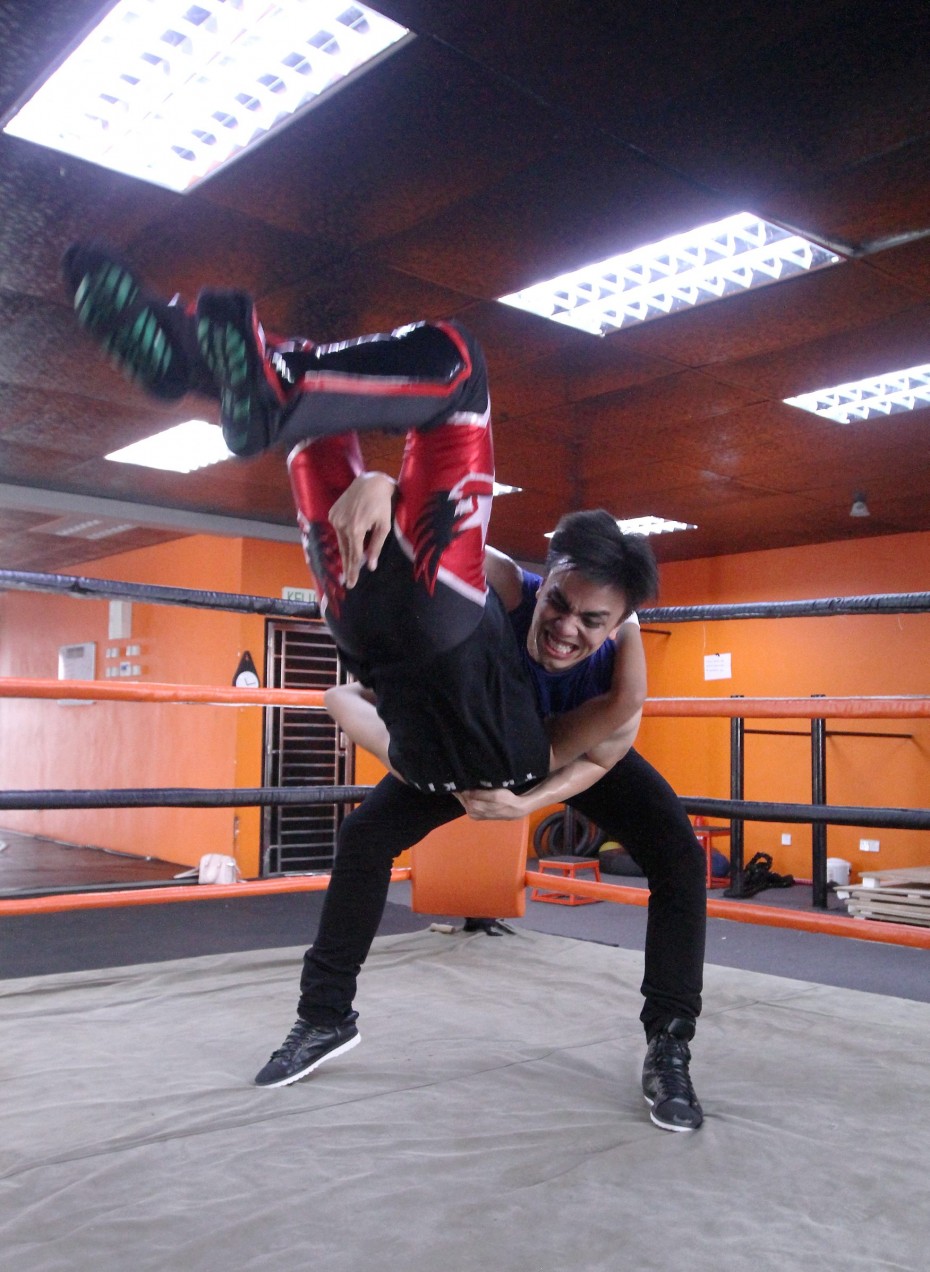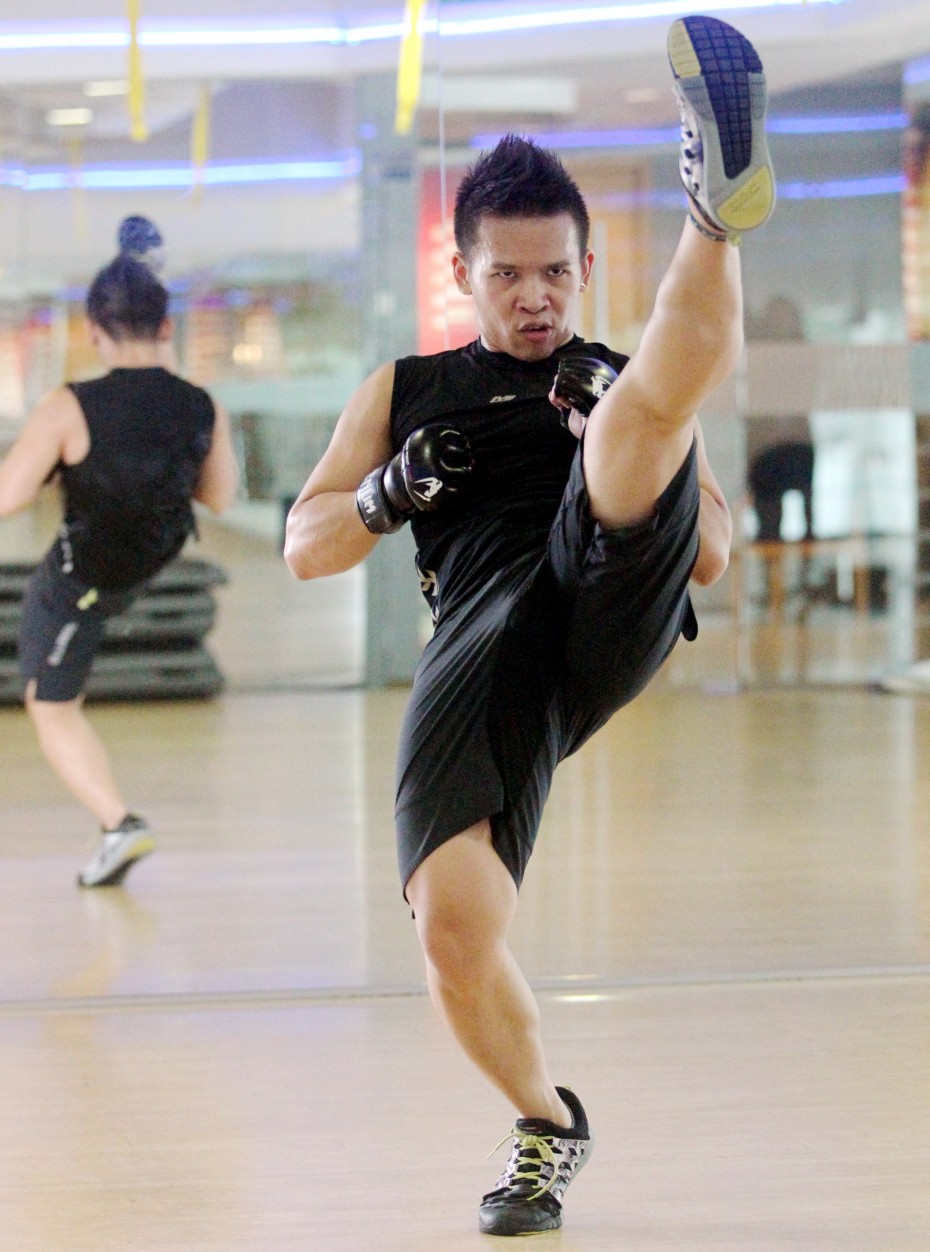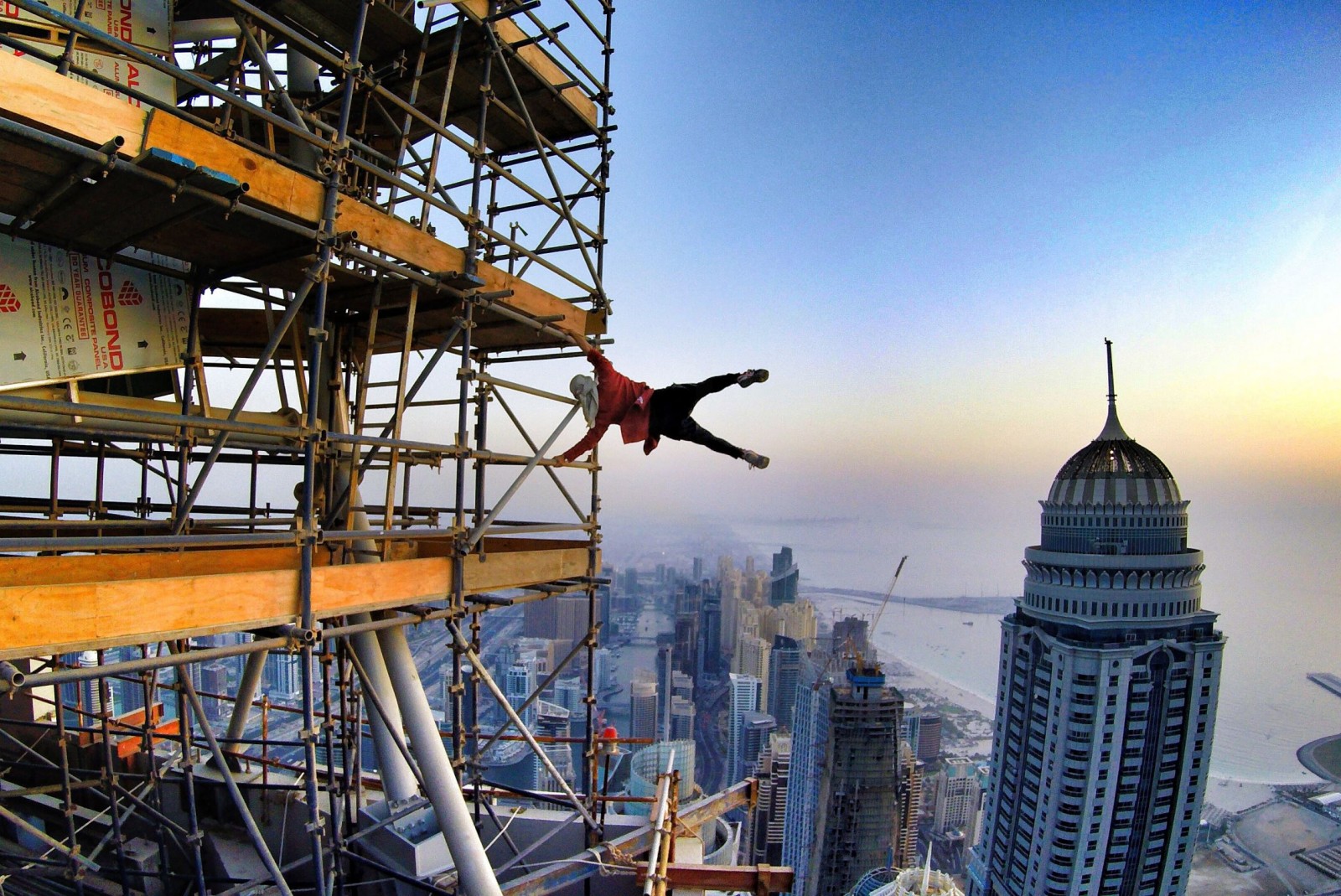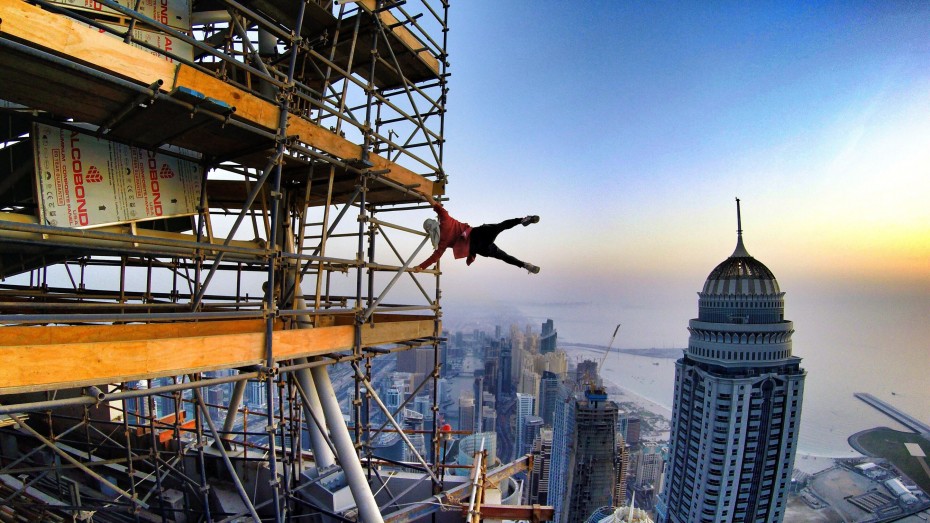By HARIS ELIAS, LIM MAY LEE and VIVIENNE WONG
alltherage@thestar.com.my
Hardcore sports are perfect for those who love testing their bodies’ limits. This week, we introduce you to three especially physically demanding ones – body combat, parkour and professional wrestling.
Whether you prefer leaping and twisting your way over, under and around obstacles, wrestling in a ring in front of an audience, or channeling your inner Bruce Lee, these three sports will definitely help get you ripped. With Hari Sukan Negara just around the corner (Oct 10 – mark your calendars!), we say get those bodies moving!

While it’s entertaining, this move, called the ‘Scoop Slam’ needs to be executed properly or else the opponent could be badly injured. SAMUEL ONG/The Star
Pro wrestling
Yes, on the surface, pro wrestling is exactly like what you see on television – people in colourful costumes trash-talking each other in the ring before opening a can of whoop@$$. But the reality is that a lot of physical work goes into pro wrestling, and in the ring, the pain is real.
“Trust me, you will never get used to the feeling of getting slammed in the ring,” said wrestling coach Ayez Shaukat Fonseka, 27, explaining that the wrestling ring is made of solid steel and wooden planks, with a one and a half inch-thick mat covering the base.
“It’s a very thin mat,” he said. “When you get slammed onto it, it knocks the wind out of you, your chest hurts, and if your opponent is not careful, you can be seriously injured.”
Of course, like any professional sport, practitioners do their best not to injure their opponents. The objective of pro wrestling is, first and foremost, to entertain, not maim. That’s why the wrestlers’ stories are scripted, matches pre-determined, and fighters pull their punches and kicks.
However, the art of NOT hurting somebody too badly is actually more difficult than it seems!
“Yes, the sounds of chops to the chest are real hits,” said Ayez. “But there are ‘safe areas’ on our bodies that can withstand great impact without sustaining long-term damage. It all comes down to a wrestlers’ mastery of techniques.”
And while it looks like fun and games, mastering the art of pro wrestling definitely doesn’t come easy.
Pro wrestling classes were launched at Harry Gym Warrior in 2014, kickstarting the burgeoning Malaysian pro wrestling scene.
Typical training sessions last up to four hours, covering strength and stamina conditioning, basic pro wrestling drills, techniques and ‘spots’ (a set of choreographed techniques).
There’s also speech training as well as acting classes to improve trainees’ showmanship, charisma and self-confidence.
And that’s just for beginners! Those who have leveled up to the bigger (read: international) leagues train up to six days a week.
Ayez himself trains five days a week, despite a long list of injuries including a dislocated knee and torn ligaments. The stuntman-turned-wrestling coach has had to schedule his training around rehabilitation, but refuses to give up his passion for pro wrestling.
“My knee is still not 100%, so I just have to train and work safely to ensure that it won’t dislocate again,” he said.
However, he was keen to emphasise that injuries are part and parcel of being a pro wrestler.
“You need to train around your injuries if you ever want to bounce back,” he said, showing the steel underneath his otherwise-affable exterior that has made him the professional he is today.
Ayez also had some words of advice for would-be pro wrestlers: “In this sport, there is no room for big egos. This is a form of performing arts, not a competitive sport. Both wrestlers need to work with each other to put on a good show, and tell the story they’re supposed to tell.”
To enquire about training and book tryouts, call or text Ayez at 011-1160 2590.
Parkour
Between breathtaking stunts and trotting the globe, professional free runner and parkour athlete Abudi Alsagoff is breaking ground in a sport that has gained huge traction over the years.
Rearrange the letters in the word “parkour” and you get “Our Park”. An apt name perhaps for a sport that has its participants turn their immediate urban environment into a personal playground.
The sport was originally termed art du deplacement (art of movement) and was founded in France by nine young men in the 1980s.
Abudi Alsagoff, who heads professional parkour crew Alpha Movements, is helping get parkour noticed locally and internationally, and is quite literally flying the flag for the sport.
In July this year, the 24-year-old climbed 200 flights of stairs to the top of the the 400m 101 Marina in Dubai and performed the human flag (a stunt where the body is parallel to the ground supported only by a vertical bar).
He was featured in British newspaper Daily Mail for the stunt and now hopes that it can inspire others.
“It was an honour and I’m really grateful to be featured in the Daily Mail, I am the first person to do the human flag there and it’s to show that all those hundreds, if not thousands of hours you put into your training will show results,” he said.
According to Abudi, parkour offers a host of health and fitness benefits, including improving physical and mental health as well as increasing stamina and building core strength.
For beginners looking to break into this acrobatic sport, he says starting slow is the way to go. “I recommend that newbies learn the basics first and then once they have mastered some techniques, they can then focus on making their movements more efficient and faster,” he said.
Alpha Movements (formed in 2012) now boasts five trained professionals, a direct result of the rising demand for parkour athletes in the entertainment industry.
The crew also hosts a wide range of parkour classes for different levels of ability – from children to adults – and try to cater to individuals with busy schedules by making night classes available. More advanced free runners are given an extensive training module designed to help them become certified trainers themselves.
Abudi believes the sport can progress better in Malaysia if regulations are loosened. “I see Malaysia producing champions in the near future, but only if free runners are alllowed to use gymnastic gyms as training grounds,” he said.
Abudi has already proven that those are obstacles he has overcome – to date, parkour has given him the opportunity to star in local commercials, compete in multiple competitions and even represent the region at the World Freerun Championships in 2013!

Chai mentioned that body combat, which is a mixed-martial arts inspired workout, helps improve cardio and coordination as well as build self confidence. So punch and kick your way to fitness! – S.S.KANESAN/The Star
Body combat
Body combat may seem like a grueling and rough sport, but according to instructor Alex Chai, 24, it’s all about having fun and letting go.
Chai, who has been an instructor for three years, started out as a regular gym member.
But the opportunity to work out with friends and the stress-busting factor kept him going back for more and eventually, he signed up to be an instructor.
“Body combat is a mixed-martial arts inspired workout that helps to improve your cardio and coordination as well as build strength, speed and agility,” said Chai.
As body combat is a non-contact sport, there is a lot of air punching and kicking. But what really drives the intensity of the workout is the music.
“If you’re stressed out from work and come for a body combat class and start moving to the beat, you’ll come out feeling better and more confident about yourself,” said another instructor Kong Sei Key, 30.
Given that it’s a full body workout, 10 songs are used per session to focus on different forms of martial arts.
For example, the instructor will include a boxing track to work on upper body strength and another track, which incorporates a few martial arts like taekwondo, kickboxing and karate, to work out the leg muscles.
With all the fun that comes with the sport, it’s no wonder that body combat is gaining popularity these days.
But Chai attributes its success to the public being more health-conscious and aware of the variety of workouts offered at gyms.
“It’s no longer a niche market because people are exposed to all these exercises, especially with pictures and hashtags on social media. It inspires them to try,” he said.
“And when a workout is fun, people come back for more. So I think that gives body combat an edge over conventional workouts like jogging and cycling.”
However, a lot of newbies tend to give up after their first class because they can’t complete the exercise.
Kong said: “Newcomers might find it quite intense but there are easier options available, with lower difficulty levels.
“We want them to keep up as much as they can, but at the same time, go easy on their workouts.
“It’s all about having a positive exercise experience.”
It’s also a challenge for instructors, who have to constantly come up with ideas to make the workouts better and more interesting.
“Although the awareness is growing, there is still work to be done to grow the sport. The biggest challenge we face now is convincing others that body combat is an effective workout that can change their lives for the better,” said Chai.








Tell us what you think!